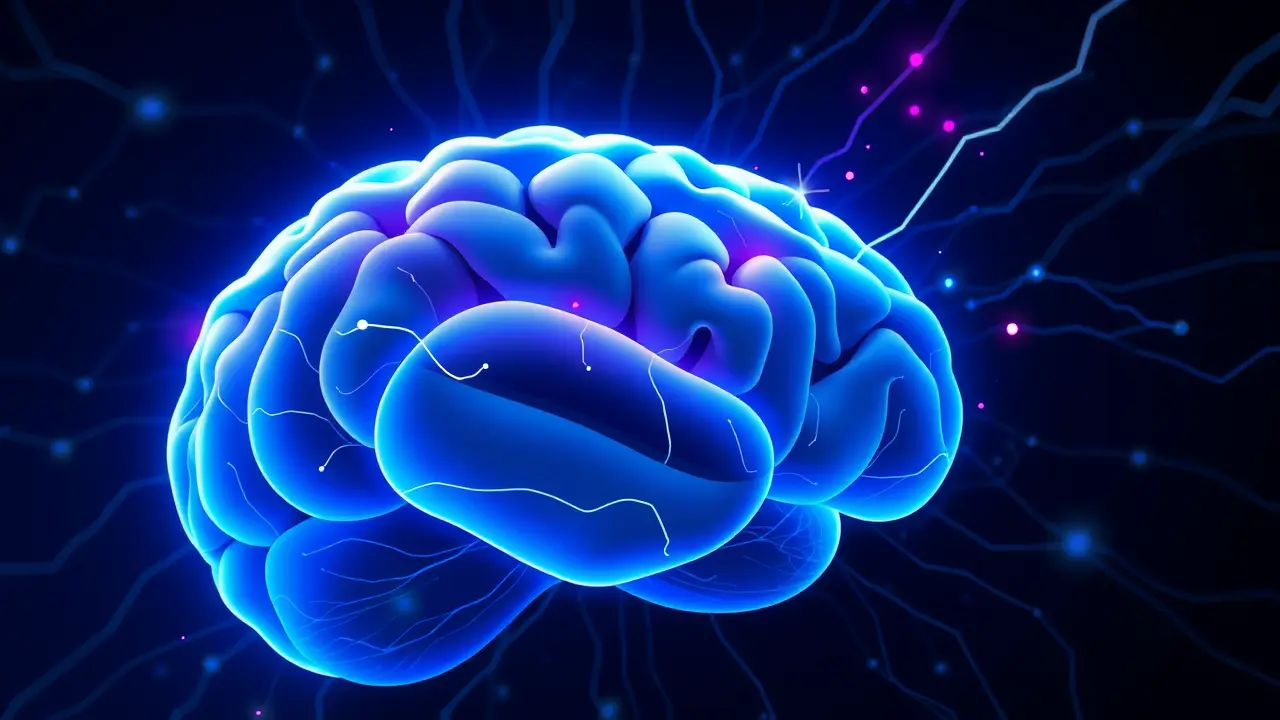
Scienceneuroscience
Common antidepressant found to work in just two weeks
KE
Kevin White
4 hours ago7 min read
In a development that fundamentally recalibrates our understanding of psychopharmacology, the common antidepressant sertraline, widely recognized under its brand name Zoloft, has been shown to exert its therapeutic influence on the emotional core of depression and anxiety in a remarkably swift two-week window, while its more notorious physical side effects follow a separate, stabilizing timeline. This isn't merely about a drug working faster; it's a paradigm shift in how we conceptualize depression itself.For decades, the prevailing model, often oversimplified for public consumption, portrayed antidepressants as a blunt instrument, slowly raising a monolithic 'mood level' across the entire brain. The Selective Serotonin Reuptake Inhibitor (SSRI) class, to which sertraline belongs, was thought to work by increasing the availability of the neurotransmitter serotonin in the synaptic cleft, a process that was believed to take four to six weeks to manifest in subjective mood improvement.This new research, however, paints a far more nuanced picture, suggesting these medications act with surgical precision on specific, interconnected symptom networks rather than delivering a uniform, blanket effect. Imagine depression not as a single, dark cloud, but as a complex weather system with distinct fronts: one front carrying the emotional thunderstorms of sadness and anhedonia, another bringing the physical aches, fatigue, and psychomotor agitation, and a third laden with the cognitive fog of poor concentration and indecisiveness.What this study indicates is that sertraline may act like a targeted atmospheric intervention, dispersing the emotional storm front within a fortnight, while the physical and cognitive systems recalibrate on their own, slightly delayed schedules. This network-based theory, gaining traction in computational psychiatry, aligns with the lived experiences of countless patients who report feeling a subtle 'lifting' of the crushing emotional weight or a slight return of anticipatory pleasure before the medication's full somatic profile—the initial nausea, sleep disturbances, or gastrointestinal issues—has fully settled or abated.The implications are profound, stretching from the clinic to the very philosophy of mental health treatment. For clinicians, this provides a powerful evidence-based narrative to manage patient expectations during the critical early stages of treatment, potentially improving adherence by framing initial side effects not as a sign the drug isn't working, but as a separate process from the emerging emotional relief.It argues for a more sophisticated diagnostic approach where we map a patient's specific symptom constellation, potentially predicting which pharmacological agent might best target their dominant network—be it emotional, somatic, or cognitive. From a research and development perspective, this is a clarion call to move beyond the monoamine hypothesis and delve deeper into the neural circuits and intracellular signaling pathways that underpin these distinct symptom domains.It invites a future where antidepressants are not just 'serotonin boosters' but targeted neuromodulators, designed with the intricate circuitry of specific depressive subtypes in mind. This finding, therefore, is more than a footnote on a drug label; it is a pivotal piece of evidence in the ongoing, revolutionary effort to deconstruct the monolithic entity of 'depression' into its constituent, targetable parts, heralding a new era of precision psychiatry where treatment is as complex and individualized as the human mind itself.
#featured
#sertraline
#zoloft
#antidepressants
#depression
#anxiety
#neuroscience
#research
Stay Informed. Act Smarter.
Get weekly highlights, major headlines, and expert insights — then put your knowledge to work in our live prediction markets.
Related News
© 2025 Outpoll Service LTD. All rights reserved.
